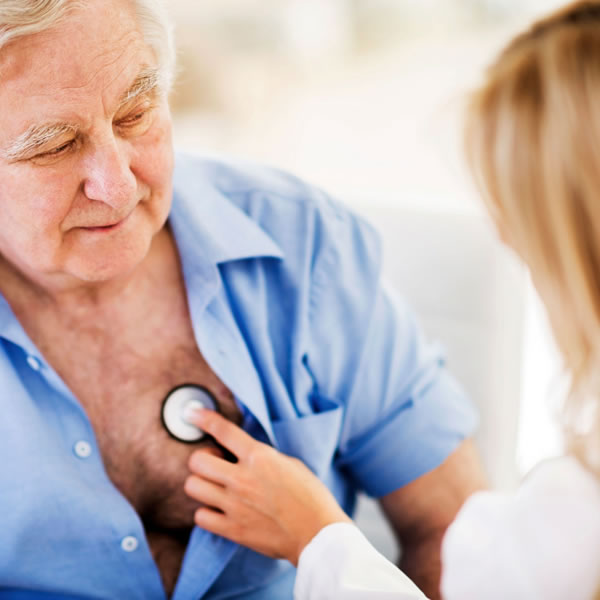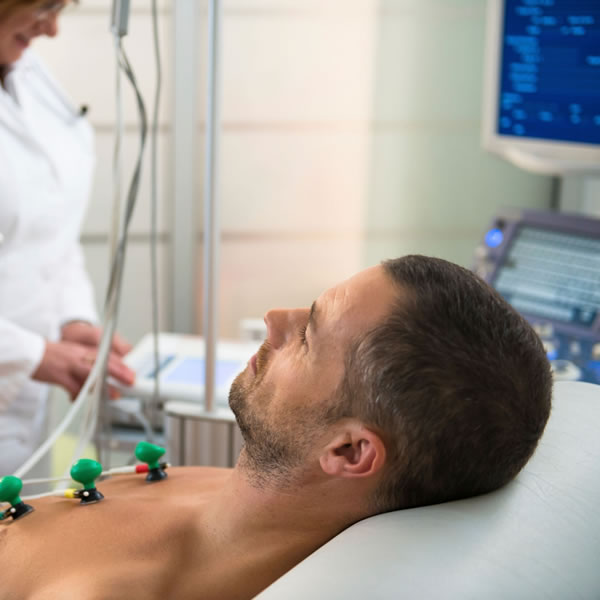Aortic Balloon Valvuloplasty
Percutaneous aortic balloon valvuloplasty (PABV) is used to relieve severe obstruction of aortic valve stenosis, which causes shortness of breath, chest pain or blackouts. It carries a significantly lower risk than surgical aortic valve replacement (being performed whilst teh patient is awake under local anaesthetic, through a puncture in the groin), but there is less clinical improvement after the procedure and benefits are sustained for a shorter period, usually for about 12 months. Therefore, the procedure is recommended for patients who are not candidates for valve surgery. Patients are hospitalized for only one or two days after the procedure.
The procedure may be performed alone, for palliation of symptoms (shortness of breath, chest pain or blackouts) or as a bridge procedure to Transcutaneous Aortic Valve Implantation in selected patients.
The percutaneous treatment of symptomatic aortic stenosis was introduced to Queensland in 1990, by Dr Aroney. Dr Aroney is the highest volume operator in Queensland, performing over 50 cases per year.
What is aortic balloon valvuloplasty?
Aortic balloon valvuloplasty is a procedure that is done on the aortic valve. It helps open up the valve so that blood can flow more easily through the heart. This procedure may be done if you do not want or cannot have surgery to treat your aortic stenosis.
Where is the aortic valve?

Your heart has four chambers or rooms. The two upper chambers are called atria (A-tree-uh). The two lower chambers are called ventricles (VEN-trik-ulls). When the heart “beats,” the atria pump blood into the ventricles. The ventricles then pump blood out of your heart. The right ventricle pumps blood into the pulmonary artery, and then into the lungs to get oxygen. The left ventricle pumps blood with oxygen into the aorta and out to the body.

There are valves (doors) between the chambers that open and close to direct blood flow through the heart. The aortic valve is the door between the left ventricle and the aorta. The aortic valve is made up of three smaller “cusps” attached to the aortic ring. The cusps come from the sides and top of the valve and meet in the middle to “close the door.” When the ventricle squeezes to push the blood out, the valve opens and allows blood into the aorta. The valve closes after the blood goes through to prevent it from flowing back into the ventricles.
What is aortic stenosis?
“Stenosis” means narrow or tight. Because your aortic valve is stenosed, it is unable to open all the way. There are several ways the aortic valve may become stenosed. Most people with aortic stenosis were born with a problem in their aortic valve.
The valve may have two cusps instead of three, or the cusps may be deformed and only partly open. As people get older, calcium can build up on the cusps. Calcium build-up may cause the cusps to get thicker and stiffer.
Having had rheumatic fever may also cause aortic stenosis.
Care Agreement
You have the right to help plan your care. To help with this plan, you must learn about your health condition and how it may be treated. You can then discuss treatment options with your caregivers. Work with them to decide what care may be used to treat you. You always have the right to refuse treatment.
Risks
There are always risks during aortic balloon valvuloplasty. You may bleed more than usual, get an infection, or have trouble breathing. The artery where the catheter was put may be damaged. The procedure may cause blood clots, air bubbles, or pieces of calcium from the valve to be in your blood. These could cause a stroke or a heart attack. The other valves or muscles in your heart could be damaged. Your kidneys may stop working. You could have problems with your heartbeat. Caregivers will watch you closely and work to help avoid these problems.
Even after this procedure, your aortic valve may grow narrow again over time. If this happens, you may need to have this procedure done again or have heart surgery. Your shortness of breath, dizziness, passing out, and chest pain could get worse if you do not have the procedure. Your heart could get larger until it has problems pumping. Fluid could build up in your lungs, and your heart could begin to fail. In heart failure, you will not be able to send the right amount of blood to your body. You could have problems with your heartbeat or you could have a heart attack and die. Call your caregiver if you are worried or have questions about your procedure, medicine or care.

While You Are Here – Before the procedure:
Informed consent: You have the right to understand your health condition in words that you know. You should be told what tests, treatments, or procedures may be done to treat your condition. Your doctor should also tell you about the risks and benefits of each treatment. You may be asked to sign a consent form that gives caregivers permission to do certain tests, treatments, or procedures. If you are unable to give your consent, someone who has permission can sign this form for you. A consent form is a legal piece of paper that tells exactly what will be done to you. Before giving your consent, make sure all your questions have been answered so that you understand what may happen.
- Blood tests: You may need blood taken for tests. The blood can be taken from a blood vessel in your hand, arm, or the bend in your elbow. It is tested to see how your body is doing. It can give your caregivers more information about your health condition. You may need to have blood drawn more than once.
- Chest x-ray: This is a picture of your lungs and heart. Caregivers may take one to see how your lungs and heart look before or after the procedure. Caregivers may also use the x-ray to look for signs of infection like pneumonia.
- Heart monitor: This is also called an ECG. Sticky pads are placed on different parts of your body. Each pad has a wire that is hooked to a TV-type screen. This shows caregivers a tracing of the electrical activity of your heart.
- IV: An IV is a tube placed in your vein for giving medicine or liquids. This tube is capped or connected to tubing and liquid.
- Pulse oximeter: A pulse oximeter is a machine that tells how much oxygen is in your blood. A cord with a clip or sticky strip is placed on your ear, finger, or toe. The other end of the cord is hooked to a machine. Caregivers use this machine to see if you need more oxygen.
- Vital signs: This includes taking your temperature, blood pressure, pulse (counting your heartbeat), and respirations (counting your breaths). To take your blood pressure, a cuff is put on your arm and tightened. The cuff is attached to a machine which gives your blood pressure reading. Caregivers may listen to your heart and lungs by using a stethoscope. Your vital signs are taken so caregivers can see how you are doing.
Pre-op care:


During the procedure:
- A caregiver will clean the skin on your groin with soap. Your groin is the area where the top of your leg meets your abdomen. This soap may make your skin yellow, but it will be cleaned off later. Sheets will be put over you to keep the procedure area clean. You will be given a shot of local anesthesia in the area where the catheter is inserted. The local anesthesia numbs the area so you do not feel it when the catheter is inserted. You may still feel pressure or pushing during the procedure.
- A sheath (long hollow tube) is put through the skin and into the artery (blood vessel) of your groin. The sheath allows your caregivers to insert different catheters (tubes) into the artery during the procedure. A catheter with a balloon on the tip is threaded through the sheath and into your heart. You may have a fluttering feeling in your chest. This is caused by extra heartbeats once the catheter is in your heart. When the end of the catheter is in the aortic valve, the balloon is filled with liquid. The filled balloon forces the valve cusps open so blood can flow more freely through the valve.
- Temporary pacemaker: This is a machine that is used to pace your heart rapidly during the balloon inflation.
- A transvenous (“through the vein”) pacemaker, is a pacing lead (wire) inserted from the groin and needed during the valvuloplasty procedure.. Your doctor inserts the pacing lead into a groin or neck vein. They thread it through the vein until it reaches the right ventricle of the heart. The pacing lead is connected to a pacer box (monitor) outside your body.
- Angiography: Angiographic pictures of your arteries and aorta are commonly taken before the valvuloplasty.

After the procedure:
- Artery (blood vessel) care: The catheter will be taken out of the artery. Caregivers will hold pressure on the area for at least 20 minutes and will apply (put on) a pressure bandage. Your vital signs will be checked often for the first few hours after the procedure. Caregivers will watch the dressing to make sure you are not bleeding or bruising too badly. The skin temperature and pulse of your leg where the catheter went in will also be checked often. Tell caregivers if you feel warmth or wetness in the area. This may mean the artery is still bleeding.
- Bedrest: You must stay in bed 4-6 hours after the procedure. While in bed you must not move around. Keep the leg with the groin incision (where the catheter was inserted) straight for 4 to 6 hours. Use your call button to call for your caregivers. Tell your caregiver if you are having pain and need pain medicine, or if you have any other problems.
- Deep breathing and coughing: This breathing exercise helps to keep you from getting a lung infection after the procedure. Deep breathing opens the tubes going to your lungs. You should deep breathe and do a number of small coughs every hour while you are awake. Also do this if you wake up during the night. When you cough, reach down and put pressure on your groin dressing. This may help to prevent bleeding from the groin incision after you cough.
- Take a deep breath and hold the breath as long as you can. Then push the air out of your lungs with small coughs. Put any sputum (spit) you have coughed up into a tissue. Take 10 deep breaths in a row every hour while awake.
- You may be given an incentive spirometer. An incentive spirometer helps you take deeper breaths. Put the plastic piece in your mouth and take a very deep breath. Hold your breath as long as you can. Then let out your breath. Use your incentive spirometer 10 times in a row every hour while awake.


- Anti-anxiety medicine: This medicine may be given to help you feel less nervous and more relaxed.
- Antibiotics: Antibiotics may be given to help treat or prevent an infection caused by germs called bacteria.
- Antinausea medicine: This medicine may be given to calm your stomach and control vomiting (throwing up). Pain medicine may upset your stomach and make you feel like vomiting. Because of this, pain medicine and anti-nausea medicine are often given at the same time.
- Pain medicine: Caregivers may give you medicine to take away or decrease your pain. Medicine may be given regularly, or may only be given if you ask caregivers for it. Tell caregivers if your pain does not decrease enough for you to feel better. Do not wait to ask for your pain medicine until the pain is very bad. The medicine may not work as well at controlling your pain if you wait too long to take it. Ask your caregiver for help getting out of bed if you feel tired or dizzy.
- Oxygen: You may need extra oxygen to help you breathe easier. It may be given through a plastic mask over your mouth and nose. It may be given through a nasal cannula, or prongs, instead of a mask. A nasal cannula is a pair of short, thin tubes that rest just inside your nose. Tell your caregiver if your nose gets dry or if the mask or prongs bother you. Ask your caregiver before taking off your oxygen. Never smoke or let anyone else smoke in the same room while your oxygen is on. Doing so may cause a fire.
If you have any further questions, please contact us at:
Queensland Cardiology
St Vincent’s Private Hospital Northside
North Medical Suites, Green Lifts Level 3,
627 Rode Road
Chermside Q 4032
(07) 3861 5522

